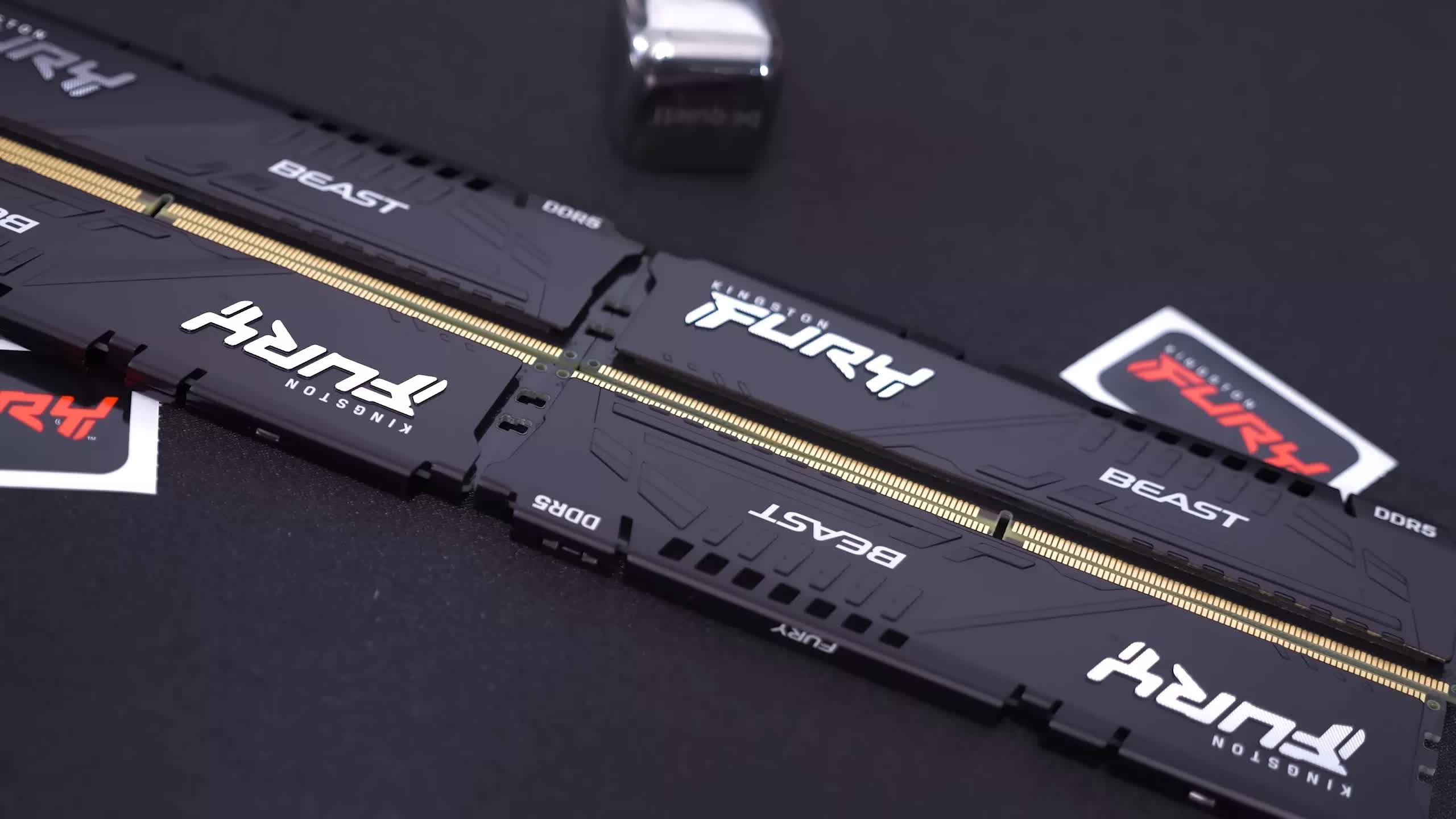
Something to look forward to: Intel is poised to elevate desktop memory speeds with its next-generation Arrow Lake processors. The upcoming Core Ultra 200 desktop CPUs may support impressive DDR5 speeds of up to 10,000 MT/s, web rumblings now suggest.
Enabling these transfer rates is a new memory standard called CUDIMM (Clocked Unbuffered Dual Inline Memory Module), which incorporates an on-module clock driver chip to regenerate the signal, ensuring better stability at high frequencies. This standard represents an evolution of traditional desktop UDIMM RAM.
Currently, Intel’s top Raptor Lake Refresh chips struggle to exceed 8,200 MT/s, even with the fastest RAM kits available. While 8,200 MT/s is certainly impressive it significantly outpaces AMD’s Ryzen 9000 series chips, which tend to max out around 6,400 MT/s – support for 10,000 MT/s represents nearly a 20 percent increase. This could further widen Intel’s lead over Team Red.

It’s worth noting that the official JEDEC specification only mandates a base speed of 6,400 MT/s for CUDIMM. However, all announced CUDIMM kits have launched above 9,200 MT/s, with some reaching an impressive 9,600 MT/s right out of the box. Memory makers like Asgard have even teased future 10,000 MT/s models on the horizon.
Motherboard manufacturers are also gearing up for CUDIMM. Leaked specifications for ASRock’s upcoming Z890 Taichi board indicate support for memory speeds of up to 9,200 MT/s in optimized configurations. With both CPU and motherboard support in place, 10,000 MT/s CUDIMM seems plausible for Arrow Lake.
Additionally, the leak suggests that Intel’s LGA-1851 Arrow Lake socket will support CUDIMM via a “Gear 2” mode, where the memory controller operates at half the DRAM data rate. This approach allows the CPU’s memory fabric to stay within specification while taking advantage of CUDIMM for ultra-high transfer rates.
While CUDIMM offers incredible bandwidth potential, there are compromises. As Tom’s Hardware points out, running at DDR5-9000 speeds and above requires substantial 1.45-1.5V DRAM voltages – up to 36 percent higher than the specification. Pushing modules to these limits raises concerns about heat output and the potential impact on lifespan. Therefore, you’ll likely need excellent cooling solutions to accompany these high-performance modules.
 Print
Print


